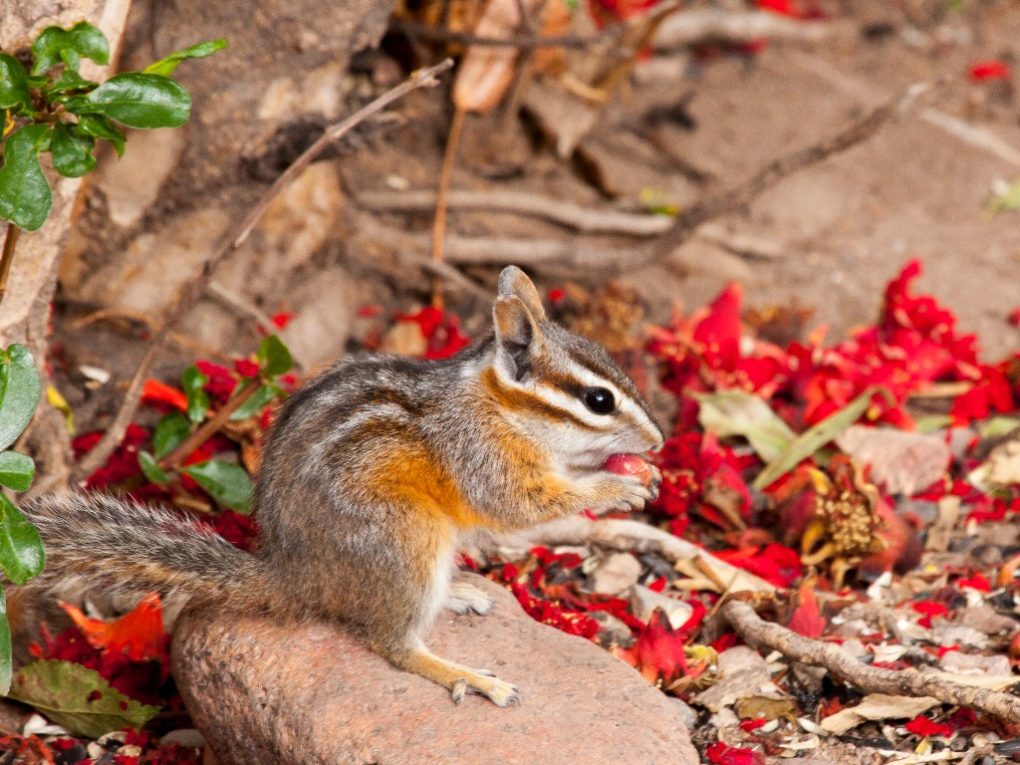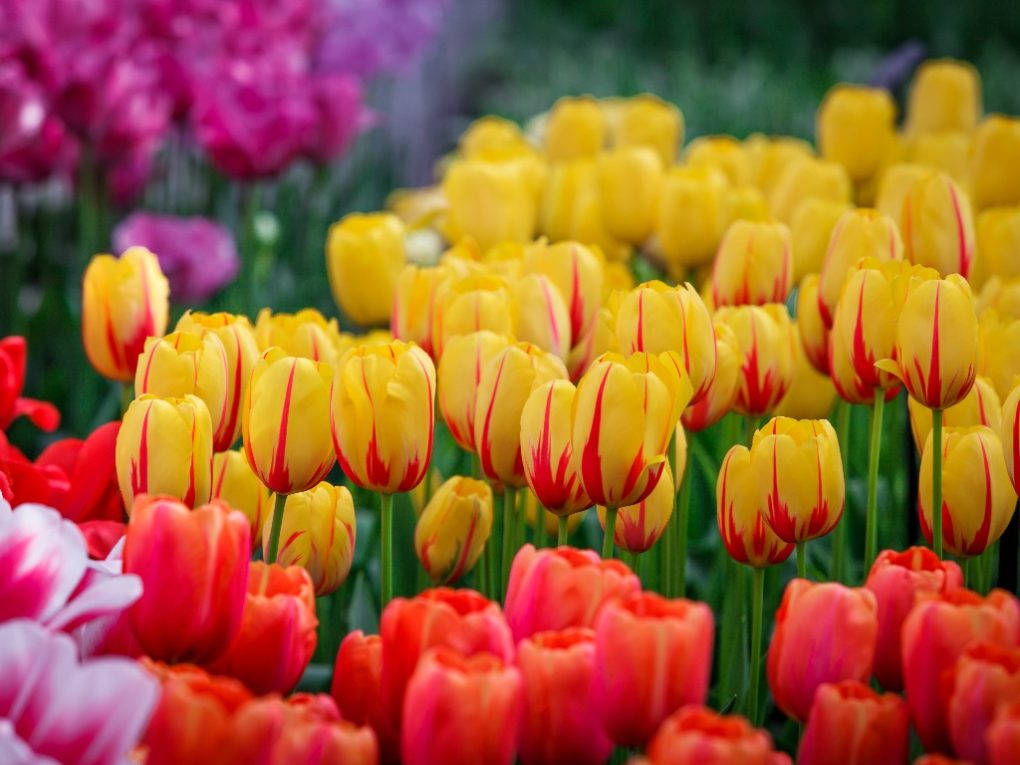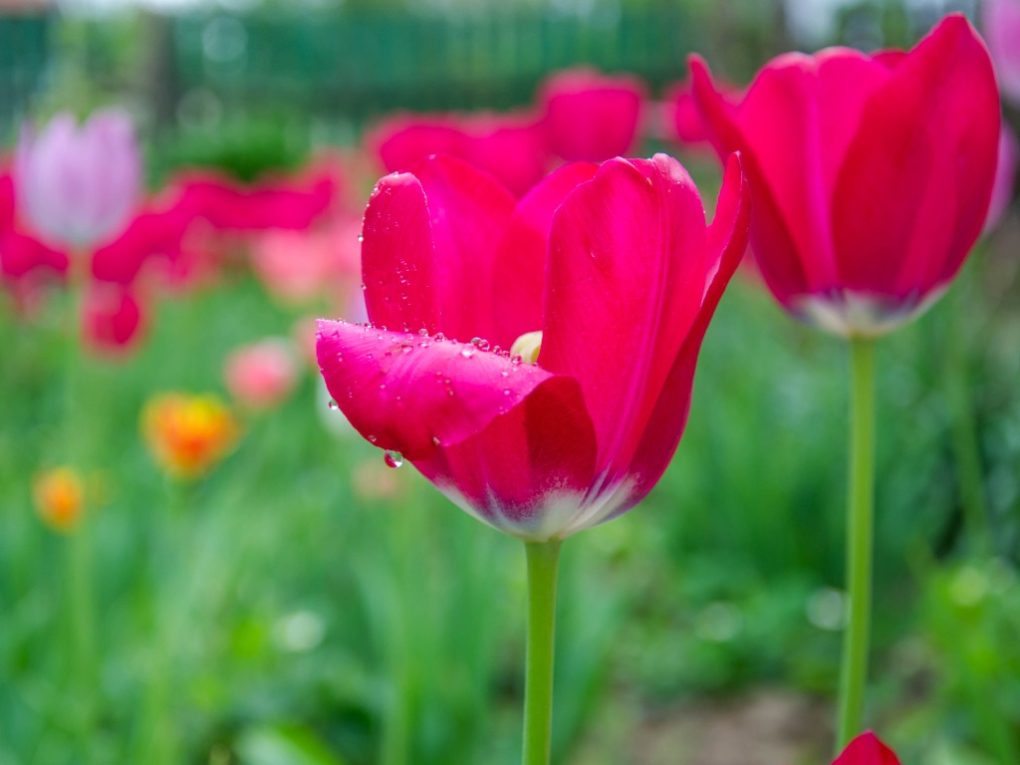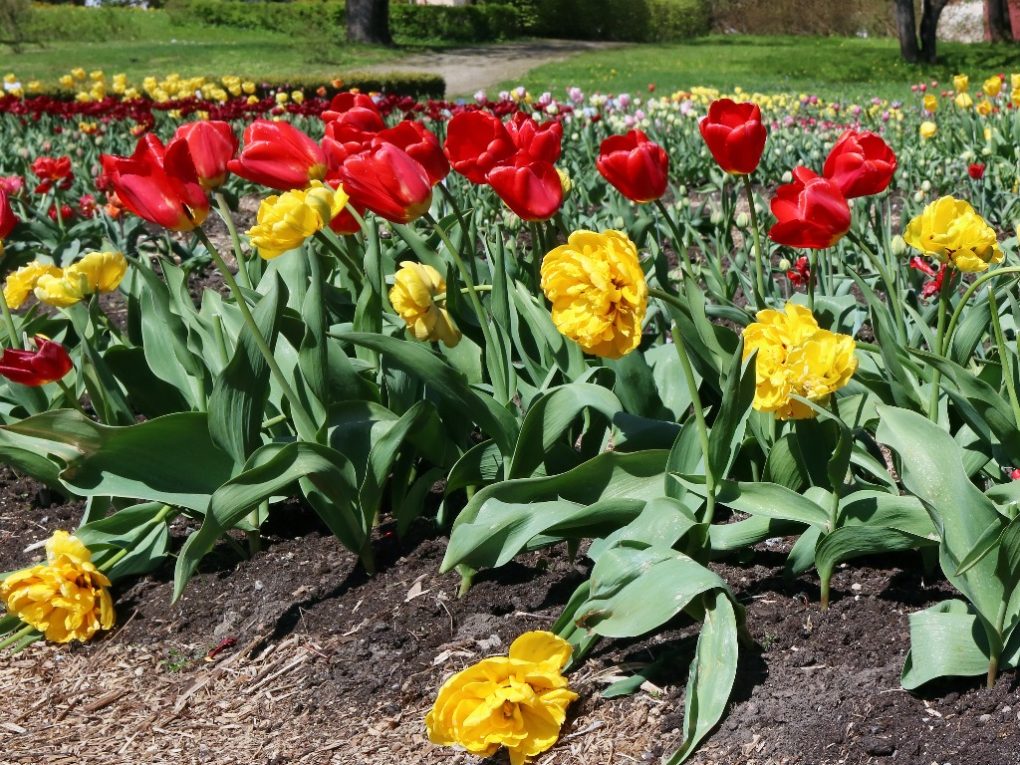Do Chipmunks Eat Tulip Bulbs: Exploring Chipmunks Feeding Habits
Yes, chipmunks are known to eat tulip bulbs. Tulip bulbs are a common target for chipmunks and other small rodents, as they provide food and nutrients. Chipmunks may dig up and eat tulip bulbs planted in garden beds or containers. Chipmunks are cute little critters that can cause big problems in your garden.

Despite their small size, chipmunks can do a lot of damage to your garden. They have sharp teeth that can easily chew through bulbs and roots and are persistent when getting what they want. If you have tulips in your garden and notice they are disappearing, chipmunks likely are to blame.
Fortunately, there are several ways to protect your tulip bulbs from chipmunks. From planting bulbs in protected areas to using natural repellents, there are many strategies you can use to keep these little pests at bay. This article will explore whether chipmunks eat tulip bulbs and provide tips for protecting your garden from these pesky rodents.
Table of Contents
Reasons Why Chipmunks Eat Tulip Bulbs
Food Source
According to Pest Pointers, Tulip bulbs are a food source for chipmunks and other rodents. The bulbs contain carbohydrates, proteins, and vitamins for these animals’ survival and growth. During the fall, when chipmunks are preparing for winter, they may dig up and eat tulip bulbs as part of their food storage strategy.
Based on experience, chipmunks eat tulip bulbs during the spring when they emerge from hibernation and need to replenish their energy reserves. While tulip bulbs are a natural food source for chipmunks, protecting them is important to enjoy tulips in your garden.
Availability
Tulip bulbs are readily available to chipmunks because they are often planted in the ground, which makes them easily accessible to burrowing rodents. When tulip bulbs are planted in garden beds, they become exposed and vulnerable to chipmunks and other animals that dig in the soil. The availability of tulip bulbs can also increase in areas with large populations of chipmunks, which may create a higher demand for food sources.

Seasonality
Chipmunks tend to eat tulip bulbs during the fall and early winter as they are preparing for hibernation and need to store food for the winter months. In some cases, they may also dig up tulip bulbs in the spring as they emerge from hibernation and need to replenish their energy reserves.
In areas where chipmunks are active year-round, tulip bulbs may be at risk of being eaten at any time. The seasonality of tulip bulb availability to chipmunks may also depend on the climate and weather conditions in the region. Protecting tulip bulbs from chipmunks and other animals that may eat them, regardless of the season, is important.
Taste
Chipmunks eat tulip bulbs because they find them tasty. Tulip bulbs contain carbohydrates and other nutrients that provide a good energy source for animals, including chipmunks. While humans generally do not eat tulip bulbs, some animals find them tasty and nutritious snacks.
Chipmunks have a preference for bulbs that are plump and healthy-looking, as these are likely to contain the most nutrients. They may also be attracted to bulbs with a softer texture, as they are easier to chew and digest. In some cases, chipmunks may also be attracted to the smell of the bulbs, which can help them locate them in the soil.
Impact of Tulip Bulbs on Chipmunks
Overconsumption
Overconsumption of tulip bulbs by chipmunks can lead to several negative impacts. Firstly, if consumed in large quantities, tulip bulbs contain alkaloids that can cause digestive issues, including vomiting, diarrhea, and stomach pain. Secondly, if chipmunks eat too many tulip bulbs, they may become too full to consume other necessary foods for their health and survival, leading to malnourishment.
Additionally, if chipmunks consume too many tulip bulbs, this can impact the reproductive success of tulips by reducing the number of bulbs available to grow into new plants. Therefore, it’s important to manage chipmunk populations to prevent the overconsumption of tulip bulbs and protect both the chipmunks and the plants.
Competition
Competition for tulip bulbs can be intense among chipmunks and other animals, especially when food resources are limited. This can lead to aggressive behaviors, including territorial disputes and fighting over food sources. If the competition is too intense, some animals may need more food to survive, which can lead to reduced population sizes or even local extinctions.

Additionally, suppose chipmunks and other animals consume too many tulip bulbs. In that case, this can impact the health of the tulip plant population and reduce the number of plants available for future generations. Therefore, it’s important to manage populations of chipmunks and other animals to reduce competition and promote the health of both the animals and the plants.
Pesticide Exposure
Pesticide exposure is a potential negative impact of tulip bulbs on chipmunks. Many gardeners use pesticides to protect their tulip bulbs from pests and diseases, but these chemicals can be toxic to chipmunks if they consume the bulbs or come into contact with the pesticides in other ways. Pesticides can cause various health problems in chipmunks, including neurological damage, respiratory issues, and digestive problems.
Additionally, if chipmunks consume tulip bulbs treated with pesticides, their health and survival can be impacted. Therefore, it’s important to use pesticides carefully and follow all instructions on the product label to minimize the risk of exposure to chipmunks and other animals. Alternatively, gardeners can consider using organic pest control methods or planting tulips less susceptible to pests and diseases.
Habitat Destruction
Habitat destruction is another potential negative impact of tulip bulbs on chipmunks. Tulip bulbs are typically planted in garden beds or pots, which can displace natural vegetation and reduce the availability of suitable habitats for chipmunks. This can make it harder for chipmunks to find food, shelter, and breeding places, ultimately impacting their population size and health.

Additionally, suppose gardeners remove or disturb natural vegetation to make room for tulips. This can disrupt the complex ecological relationships between chipmunks and other animals that rely on the same habitat.
To minimize the impact of tulip bulbs on chipmunks and other wildlife, gardeners can consider planting them in areas that have already been disturbed or degraded or in conjunction with other native plants that provide additional habitat and food sources for chipmunks. Leaving some natural vegetation intact can help maintain biodiversity and support healthy chipmunk populations.
